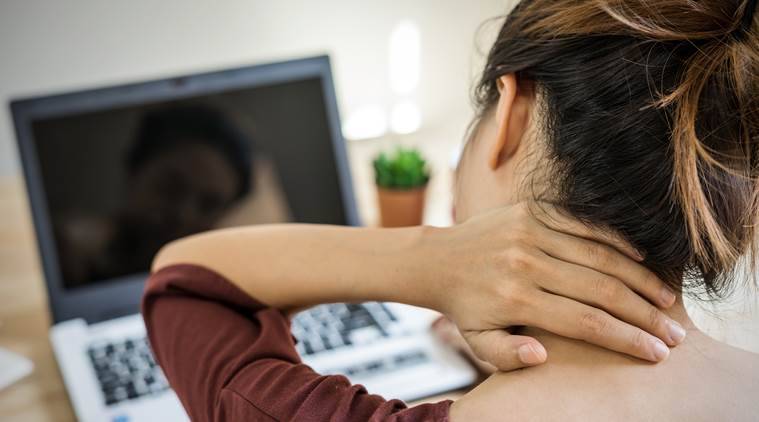The Mirror's Health , Lifestyle and Fashion

Your neck pain could be from prolonged texting
Text Neck, also known as Tech Neck, explains the pain and symptoms resulting from prolonged bending of our heads when we, for instance, spend time on our phones. Despite this syndrome being predominantly associated with texting, it could also result from many other activities that involve looking downwards.
Advertisement
What causes text neck?
The neck carries the head's weight, which is usually between 4.5 - 5kg, with the help of the neck muscles. Anytime you bend your head, this weight increases, and your head gets heavier; even at 15 degrees, the weight increases to about 12kg.
Looking down at your phone or mobile device for long hours puts more pressure on your neck, eventually increasing the workload on the neck muscles. Over time, the muscles become sore, tight and weak. The severity may vary depending on the angle and the amount of time spent in that posture.
Here are some symptoms to look out for:
Pain in the neck which spreads across the shoulder and upper back.
Headaches associated with the neck pain.
Tightness and limited movement in your neck, upper back and shoulders.
Difficulty maintaining a good head posture: your head pokes in front of your shoulders instead of resting directly above them.
Increased neck pain when you bend your head or look down.

How do I prevent text neck?
If not addressed, Text Neck worsens over time, sometimes leading to Spinal Degeneration, Disc Compression and Spine deformities.
Unfortunately, it isn't easy to do away with these mobile devices because they play a crucial role in communication. Regardless, we can take precautions to prevent or minimise the pain associated with prolonged use of these mobile devices by considering these recommendations:
Although unusual, hold your device at eye level instead of looking down. When using computers, position the monitor high enough to look at the screen without bending your head.
Avoid prolonged bending of the head; take frequent breaks and limit phone/tablet usage.
Do stretches and exercises that target the neck and upper back area as a daily routine.
Talk to a Physiotherapist if pain persists. Your Physiotherapist will help relieve the pain and teach you exercises which will strengthen your back and neck muscles to help keep your head in the correct posture. You will also be given a guide to postural changes to prevent the reoccurrence of Text Neck.




